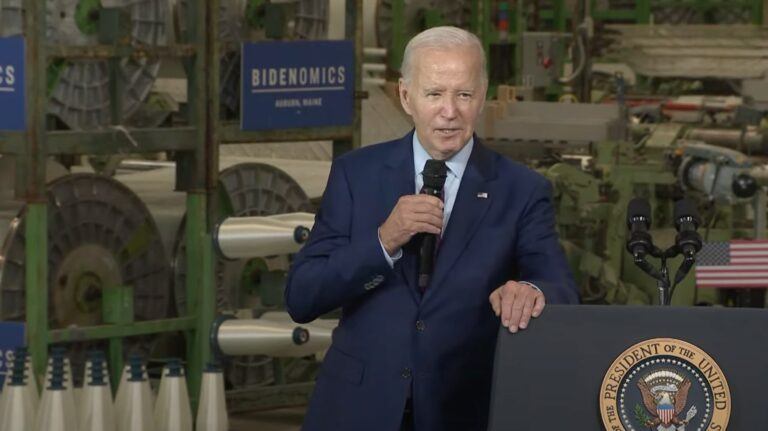
In a thought-provoking opinion piece for The New York Times, economist Paul Krugman revisits the concept of a “soft landing” in the context of current economic conditions, drawing parallels with historical instances of inflation and economic strategies.
Paul Krugman is an American economist, distinguished professor, and op-ed columnist for The New York Times. Born on February 28, 1953, Krugman is renowned for his work in international economics, including trade theory and economic geography. In 2008, he was awarded the Nobel Memorial Prize in Economic Sciences for his analysis of trade patterns and location of economic activity.
Krugman has been a vocal commentator on economic policy, globalization, and the economics of information technology. Apart from his academic achievements and contributions to economics, he is known for his ability to explain complex economic concepts to the general public through his columns and books. Krugman has been an influential figure in public debates over economic policy, advocating for Keynesian economics and expressing critical views on the fiscal policies of various administrations.
In his article, which was published on March 12, Krugman references the hopeful yet ultimately unfulfilled prediction by George Shultz, the Treasury secretary in 1973, of a soft landing for the American economy amid rising inflation, setting the stage for a discussion on the present economic outlook under President Biden’s administration.
<!–
–>
Krugman closely examines President Biden’s recent assertion during the State of the Union address that the United States is on course for a soft landing — a scenario characterized by low inflation without the detriment of high unemployment. Krugman delves into the specifics of what constitutes a soft landing, drawing upon criteria previously outlined by Harvard’s Jason Furman in October 2022, and assessing the current economic indicators against these benchmarks.
Through Krugman’s lens, recent economic data suggests a cautious optimism. Despite some disappointing figures, including higher-than-expected consumer price reports and potential signs of labor market deterioration, Krugman suggests that the fears of a hard landing may be overstated. He argues that the foundational indicators of inflation, particularly when excluding volatile or lagging factors such as food, energy, and shelter prices, remain promising.
Krugman extends his analysis to wage trends and productivity rates, offering an alternative perspective on the underlying inflation rate, which he posits is closer to 2.5 percent. This analysis is bolstered by private business surveys and purchasing manager reports, further supporting the notion that inflation may not be as pressing a concern as some fear.
However, Krugman does not overlook the challenges that lie ahead, particularly on the unemployment front. He highlights the utility of the Sahm rule, an empirical measure named after former Fed economist Claudia Sahm, as a reliable indicator of recession risk. Krugman notes the creeping increase in unemployment rates, raising concerns about the potential impact of sustained high interest rates on the economy.
Featured Image via YouTube (White House’s Channel)
- SEO Powered Content & PR Distribution. Get Amplified Today.
- PlatoData.Network Vertical Generative Ai. Empower Yourself. Access Here.
- PlatoAiStream. Web3 Intelligence. Knowledge Amplified. Access Here.
- PlatoESG. Carbon, CleanTech, Energy, Environment, Solar, Waste Management. Access Here.
- PlatoHealth. Biotech and Clinical Trials Intelligence. Access Here.
- Source: https://www.cryptoglobe.com/latest/2024/03/is-biden-doing-a-much-better-job-of-managing-the-us-economy-than-trump-claims-paul-krugman-shows-the-path-to-a-soft-landing/
- :has
- :is
- :not
- 12
- 1973
- 2008
- 2022
- 28
- a
- ability
- About
- academic
- achievements
- activity
- address
- administration
- Administrations
- Ads
- advocating
- After
- against
- ahead
- All
- alternative
- American
- American economist
- Amid
- an
- analysis
- and
- apart
- Argues
- article
- AS
- Assessing
- awarded
- BE
- been
- benchmarks
- bolstered
- Books
- born
- business
- by
- cautious
- challenges
- Channel
- characterized
- closely
- closer
- Columns
- commentator
- complex
- concept
- concepts
- Concern
- Concerns
- conditions
- consumer
- context
- contributions
- Course
- criteria
- critical
- CryptoGlobe
- Current
- data
- debates
- delves
- Despite
- disappointing
- discussion
- Distinguished
- does
- drawing
- during
- Economic
- Economic Conditions
- economic indicators
- Economic policy
- Economics
- Economist
- economy
- energy
- Examines
- excluding
- Explain
- expressing
- extends
- factors
- fear
- fears
- February
- Fed
- Figure
- Figures
- Fiscal
- food
- For
- Former
- foundational
- from
- front
- further
- General
- general public
- geography
- George
- globalization
- Hard
- he
- High
- highlights
- his
- historical
- hopeful
- HTML
- HTTPS
- image
- Impact
- in
- Including
- Increase
- Indicator
- Indicators
- inflation
- inflation rate
- Influential
- information
- information technology
- interest
- Interest Rates
- International
- into
- jpg
- known
- Krugman
- labor
- labor market
- lagging
- landing
- lens
- lie
- location
- Low
- manager
- March
- Market
- May..
- measure
- Named
- New
- New York
- New York Times
- Notes
- Notion
- october
- of
- offering
- on
- Op-ed
- Optimism
- or
- outlined
- Outlook
- over
- overstated
- Parallels
- particularly
- patterns
- Paul
- Paul Krugman
- percent
- perspective
- plato
- Plato Data Intelligence
- PlatoData
- policies
- policy
- potential
- prediction
- present
- president
- pressing
- previously
- price
- Prices
- private
- prize
- productivity
- Professor
- promising
- public
- published
- purchasing
- raising
- Rate
- Rates
- recent
- recession
- references
- reliable
- remain
- Renowned
- Reports
- rising
- Risk
- Rule
- s
- scenario
- SCIENCES
- Screen
- screens
- secretary
- setting
- Shelter
- Signs
- sizes
- Soft
- some
- specifics
- Stage
- State
- States
- steering
- strategies
- such
- Suggests
- Supporting
- Technology
- that
- The
- The New York Times
- The State
- theory
- These
- this
- thought-provoking
- Through
- times
- to
- toward
- trade
- treasury
- Trends
- u.s.
- U.S. economy
- Ultimately
- under
- underlying
- unemployment
- union
- United
- United States
- upon
- use
- utility
- various
- via
- views
- vocal
- volatile
- wage
- was
- What
- when
- which
- white
- with
- without
- Work
- yet
- york
- youtube
- zephyrnet













